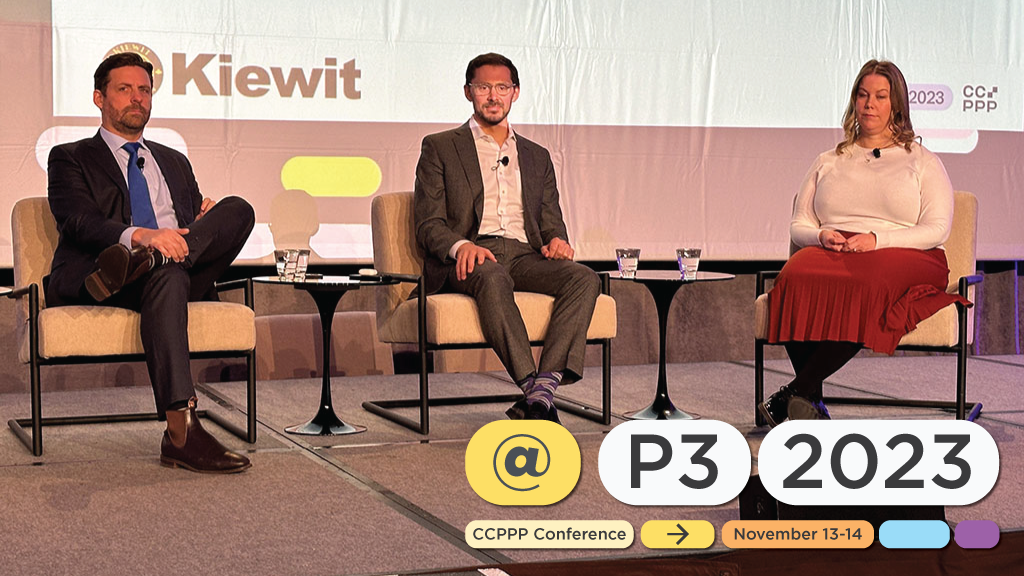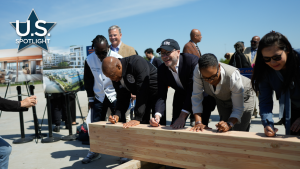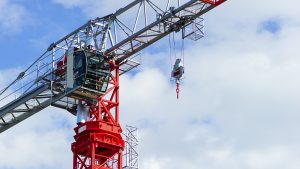As the United States embarks on generational infrastructure improvement, there’s lessons to be learned from both sides of the border.
Canadian Council for Public-Private Partnerships (CCPPP) president and CEO Lisa Mitchell moderated a session titled Awakening Giant: How the U.S. is Transforming its Infrastructure and What that Means for Canada at the annual P3 conference recently in Toronto, with Goldman Sachs vice-president Christopher Elmore, BTY Group director Marie Foley and Kiewit Development senior vice-president Lawren Green as panellists.
While the title of the session reflects the common attitude that U.S. industrial activity dwarfs that of Canada, with P3 procurement the reality is more complex.
“The broadest takeaway is do you want a smaller, high probability pipeline like Canada, or a gigantic but low-probability pipeline like the U.S.?” Elmore asked.
“Although the U.S. market is enormous in (terms of) traditional and alternative delivery, it’s also 50 different markets and lots of different markets within each state.”
Mitchell noted while in Canada a project is more than likely to go ahead, in the U.S. the risk of project cancellation is far higher, but noted their market has rapidly changed over the past few years.
“It’s not as inherent is what I’m learning about the U.S. But I also think their market has changed so much that where we used to be in a world where the U.S. came to Canada to learn from us, we also have the opportunity to learn from them,” she said. “They’ve done things a little differently. They’ve adapted the model in ways that I think we look at (in terms of) how do we learn from that experience?
“We’ve focused on the social side (of infrastructure) while the U.S. has focused on the civil side, so I think there’s opportunities there for us to learn. Revenue demand risk is something that they’ve been doing and we have less experience in that,” Mitchell added.
“In this new world of progressives, or pre-development agreements as they’re referred to in the U.S., such as LA Metro’s approach, that’s a new space and in Canada. We’re not necessarily uniform in our approach,” she said. “There are things they’re doing down there that are absolutely things that Canada is looking towards and seeing if it fits in our space.”
Elmore said while Canada has a robust group of associations and organizations focused on infrastructure and the P3 model, the United States does not.
“There are no real public centres for excellence that focus on P3,” he said. “Most P3s in the United States are the first ones for that owner. The expertise resides in law firms and procurement advisers and that creates a different dynamic where, rather than having an organization tasked with (P3) expertise, you have an owner relying almost entirely on advisers to give advice in the context of a wider market,” he said.
The Canadian industry came together as P3s developed and adapted a programmatic approach, Mitchell said, whereas U.S. projects tend toward specific procurement models on a case-by-case basis.
“In terms of the mechanics of the model, you can take what you learn from a hospital and apply it to another asset class. I think that programmatic approach is one of the things that’s made Canada successful,” she said. “Just housing all that information together really strengthens the opportunities.”
Certain aspects of Canadian P3 development could also benefit the U.S., Foley said.
“What we do working with Indigenous groups here on projects, that should be a bigger topic in the U.S. They’re bundling school projects, and we’ve done that up here successfully already,” she said.
“To get municipalities involved, we need to share what we’ve done here, and increasing awareness of successes and drawbacks is important on both sides.”










Recent Comments